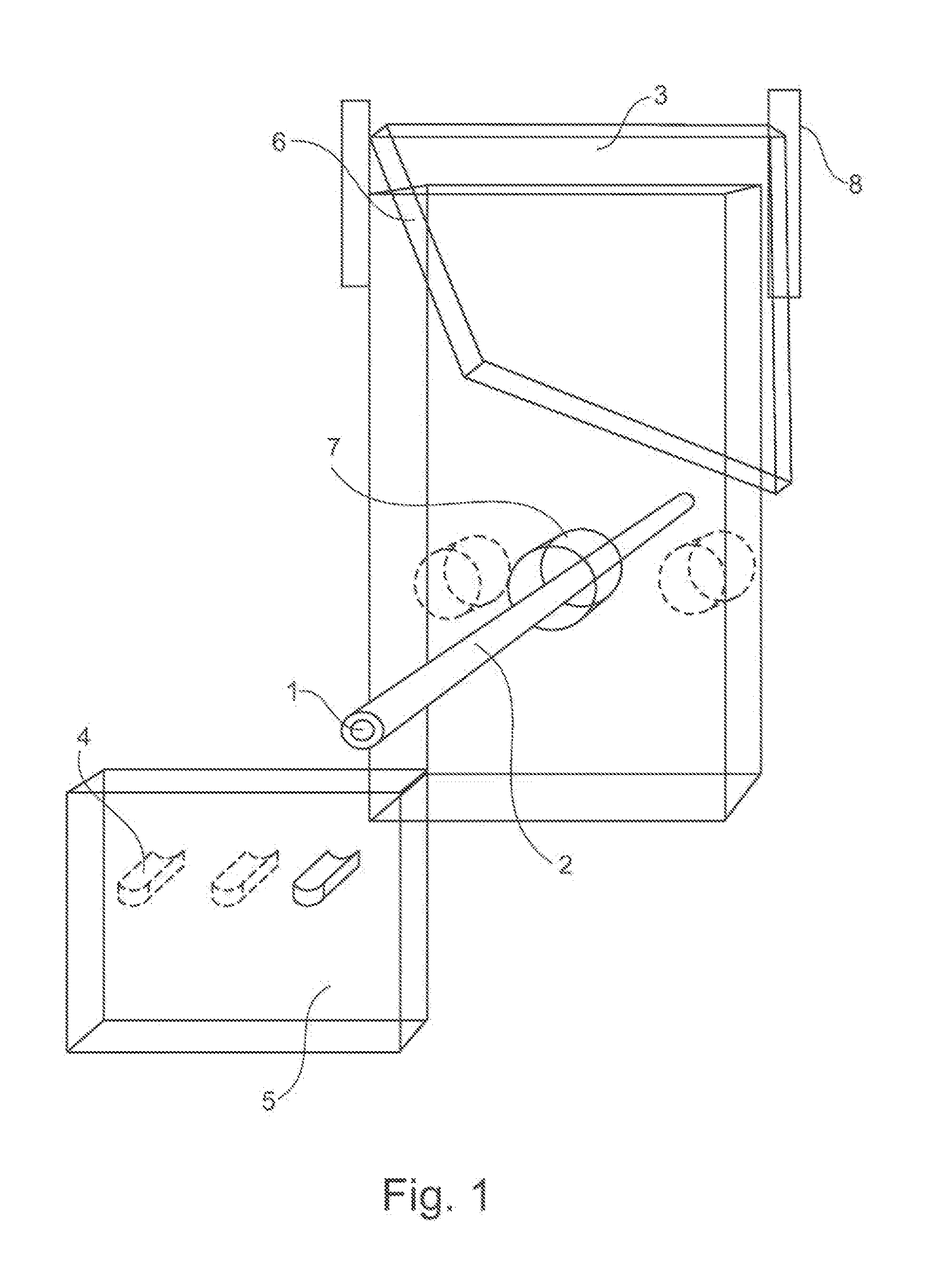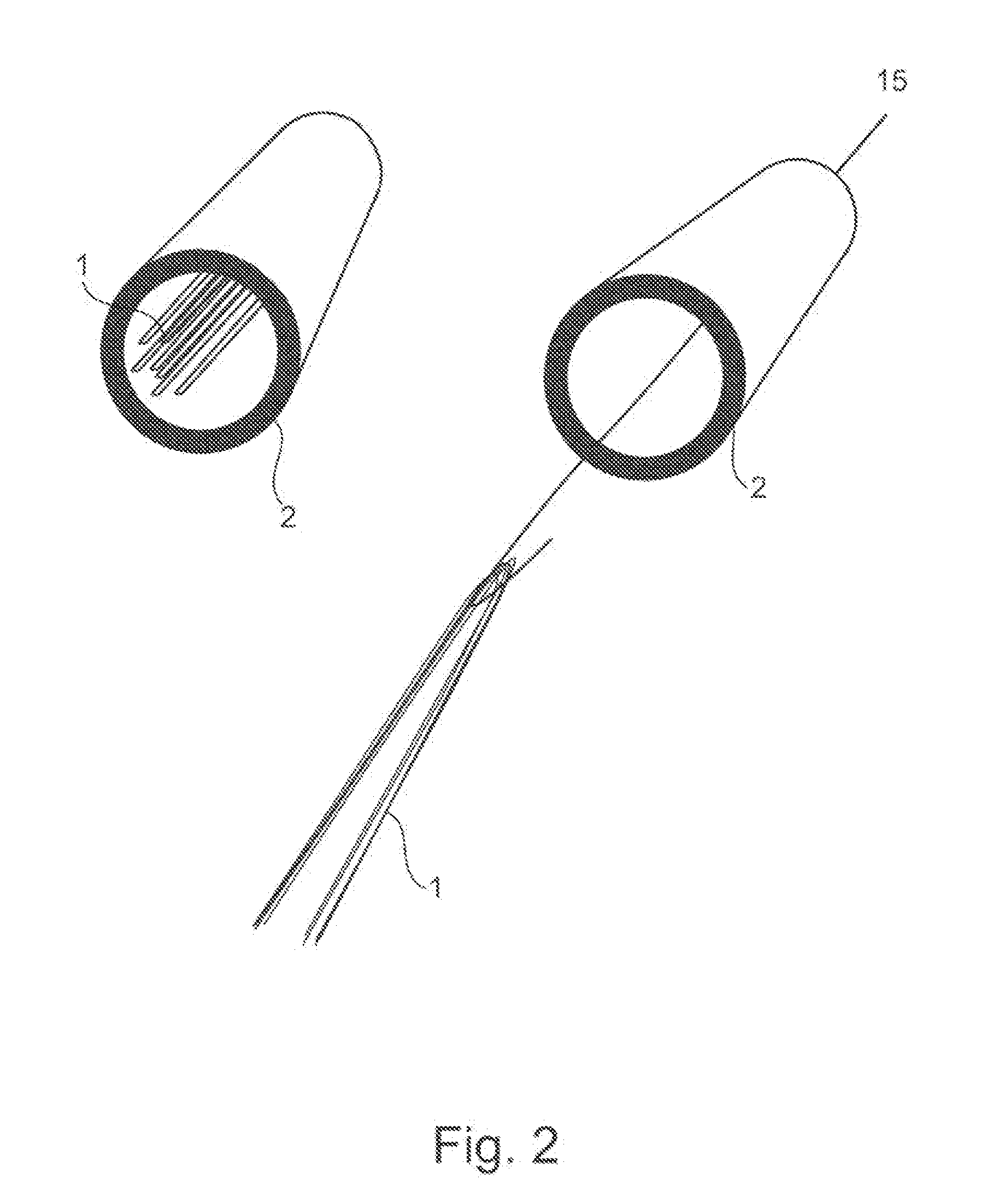Device for cutting hair
a technology for cutting devices and hair, applied in the direction of metal sawing devices, sensors, diagnostics, etc., can solve the problems of inability to improve measurements, inability to meet standards, and insufficiently standardized suitable reference materials for hair solid matrix, etc., to achieve cost-effective and excellent homogeneity
- Summary
- Abstract
- Description
- Claims
- Application Information
AI Technical Summary
Benefits of technology
Problems solved by technology
Method used
Image
Examples
Embodiment Construction
[0046]FIG. 1 shows a schematic view of an embodiment of the device according to the invention. The device comprises at least one retaining element (2) with a cylindrically formed interior that is suitable to immobilize and potentially to bundle a sample (1) to be cut, which is composed of a multiplicity of hairs, fibers, or thin, flexible materials, in the lengthwise direction of the retaining element (2). The device comprises in addition at least one guide rail (4), which is arranged on a moving element (5), and which is suitable to align the retaining element in at least one guide opening (7) located in a plate (6) standing essentially perpendicular to the retaining element. The device comprises in addition a cutting device (3) that is suitable to cut the fibers or thin, flexible materials bundled and immobilized in the lengthwise direction of the retaining element, substantially perpendicularly to the cylinder axis of the interior of the retaining element (2). The movable plate c...
PUM
| Property | Measurement | Unit |
|---|---|---|
| diameter | aaaaa | aaaaa |
| diameter | aaaaa | aaaaa |
| diameter | aaaaa | aaaaa |
Abstract
Description
Claims
Application Information
 Login to View More
Login to View More - R&D
- Intellectual Property
- Life Sciences
- Materials
- Tech Scout
- Unparalleled Data Quality
- Higher Quality Content
- 60% Fewer Hallucinations
Browse by: Latest US Patents, China's latest patents, Technical Efficacy Thesaurus, Application Domain, Technology Topic, Popular Technical Reports.
© 2025 PatSnap. All rights reserved.Legal|Privacy policy|Modern Slavery Act Transparency Statement|Sitemap|About US| Contact US: help@patsnap.com



